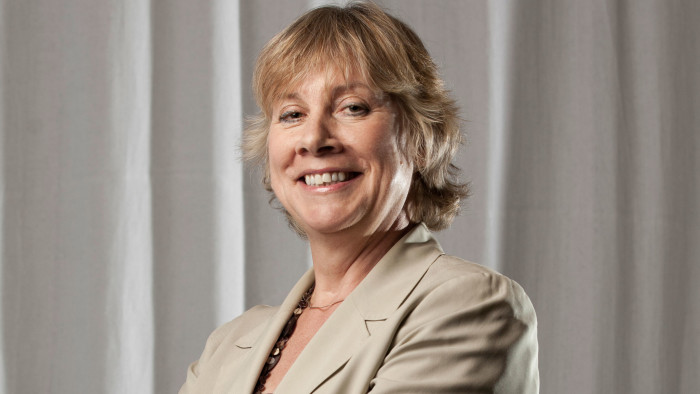Cherchez la femme

Roula Khalaf, Editor of the FT, selects her favourite stories in this weekly newsletter.
Although it is the problems in the eurozone that continue to grab the headlines, there is another thorny issue facing many European companies: how many women they have on their corporate boards. It is a debate that has raged since long before the currency crisis, but 2012 has seen it move from the wish list to the priority list as European commissioner Viviane Reding threatened a quota system if corporates did not get their act together.
Commissioner Reding asked business schools to supply lists of women whom they considered suitable to sit on corporate boards. Meanwhile in the US, the Forté Foundation, a consortium that supports women in business, launched a similar scheme in June, asking 33 top business schools such as Harvard and MIT Sloan to supply lists of appropriately qualified women.
So far so good. But why are so few women making it to the top echelons of the corporate world? And can the blame somehow be placed at the door of business schools? As ever, much of the attention has focused on MBA programmes and how few women are on them. This is true: only about one-third of participants on full-time MBA programmes are women.
But here is what I cannot understand. For those programmes targeted at younger professionals, such as the 21- or 22-year-olds on masters in management (MiM) programmes, the number of women is often equal to or higher than the number of men. In the FT’s 2012 rankings, at least half the students on 25 of the 70 ranked programmes were women. Take Warwick Business School in the UK: almost two-thirds (73 per cent) of the students on the MiM programme are female, compared with 27 per cent on the full-time MBA.
The figures are replicated across Europe. At HEC Paris, for example, 45 per cent of MiM students are women, compared with 32 per cent on the MBA and 26 per cent on the Trium EMBA run with NYU Stern in New York and LSE in London, which attracts very senior executives.
Given that so many women have committed so early to a business career, either through undergraduate or masters level programmes, why are there so few women on Europe’s corporate boards? And is the number of women on corporate boards the right statistic to measure?
If half those leaving university with an undergraduate or masters degree in business and management are women, is that reflected in the numbers the top corporates take on in their graduate training programmes? If so, where do they go after the initial training period?
Is there parity between men and women in terms of promotion? And what is the pay comparison between equally qualified men and women in the same company when they are in their mid to late 20s? Do graduate recruiters know those figures and understand why differences occur? I suspect not.
What is clear, is that somewhere between the enthusiasm of young female managers setting out on their careers and the disillusionment that accompanies the fact that so few of them make it to the board, something goes horribly wrong.
Of course, the easy answer is to say it is all about children, especially in countries such as Germany, where women get up to three years leave per child, or the US, where paid maternity leave is close to non-existent and women often quit work altogether. For me, this answer is just a bit too lazy. Of course there are women who give up careers for a family, but what about all the others? I can’t help feeling that corporate culture is the culprit.
Last year, I remember talking to Glenn Hubbard, dean of Columbia Business School in New York. He said that whenever the faculty proposed a male-only shortlist of names for a professorial appointment, he always asked for the most appropriate women to be included. These days at least one female professor is always on the list.
Should corporate directors take a leaf out of this business school book when appointing and promoting the most junior managers? Of course, business schools do not have all the answers. There are some areas in which they are as bad – if not worse – than the corporate world.
For although Insead answered Commissioner Reding’s call to supply the names of 2,000 female managers and professors that the school felt were ready for corporate boards, only 20 of its own board of 144 are women – just 14 per cent. It is a similar story at MIT Sloan. Just 19 of the 136 board members (also 14 per cent) of Sloan’s advisory board members are female. While the advisory boards of business schools are packed with corporate suits, I fear the programmes they offer will be too.
……………………………………………………………..
For the latest news and views affecting women in business education, plus interviews, special reports, blogs and video go to: www.ft.com/businesseducation/women
Comments